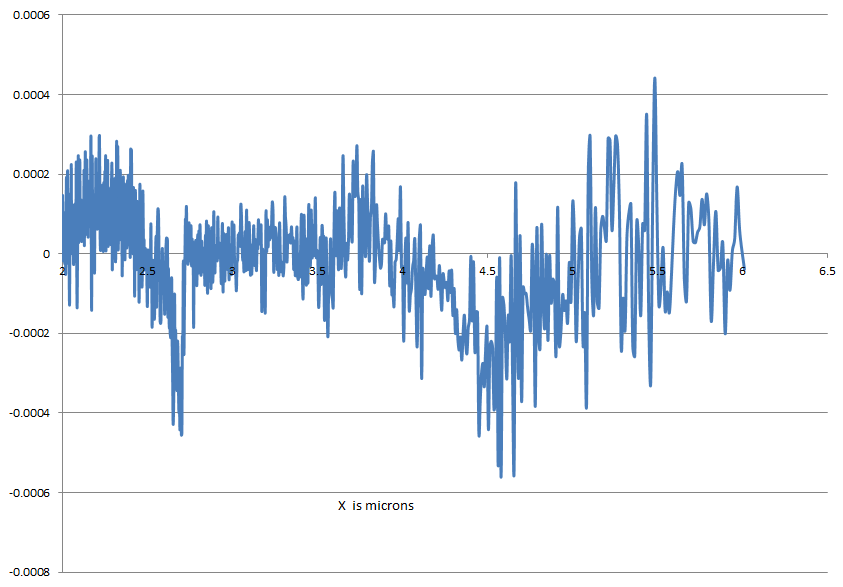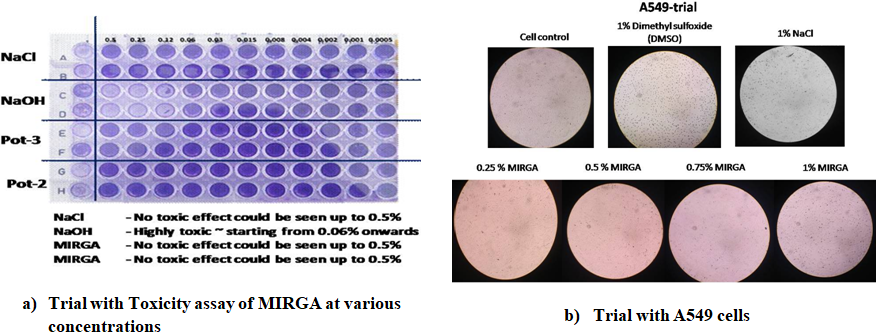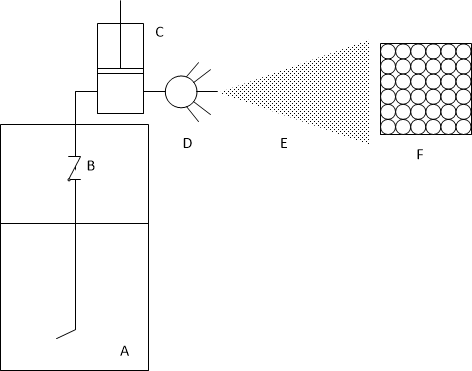-
Paper Information
- Paper Submission
-
Journal Information
- About This Journal
- Editorial Board
- Current Issue
- Archive
- Author Guidelines
- Contact Us
International Journal of Electromagnetics and Applications
p-ISSN: 2168-5037 e-ISSN: 2168-5045
2024; 13(1): 1-9
doi:10.5923/j.ijea.20241301.01
Received: Jan. 6, 2024; Accepted: Jan. 20, 2024; Published: Jan. 23, 2024

Invention of Mid-InfraRed Generating Atomizer (MIRGA), Its Atomic-Molecular-Chemical Bond Level Actions and Applications
Umakanthan T.1, Madhu Mathi2, Umadevi U.3
1Veterinary Hospital, Gokulam Annadhanam Temple Complex, Plot no.: 1684, Meenavilakku-Meenakshipuram Road, Anaikaraipatty Post, Bodinayakanur Taluk, Theni Dt, Tamil Nadu, India
2Veterinary Hospital, Vadakupudhu Palayam, Erode Dt, Tamil Nadu, India
3Assistant Professor, Department of Botany, The Standard Fireworks Rajaratnam College for Women, Sivakasi, Virudhunagar (Dt), Tamil Nadu, India
Correspondence to: Umakanthan T., Veterinary Hospital, Gokulam Annadhanam Temple Complex, Plot no.: 1684, Meenavilakku-Meenakshipuram Road, Anaikaraipatty Post, Bodinayakanur Taluk, Theni Dt, Tamil Nadu, India.
| Email: |  |
Copyright © 2024 The Author(s). Published by Scientific & Academic Publishing.
This work is licensed under the Creative Commons Attribution International License (CC BY).
http://creativecommons.org/licenses/by/4.0/

Mid-IR has potential use in every field but existing technologies are limited and do not have applications in day-to-day life. Available mid-IR sources are also lagging behind due to complexity and high cost. To overcome these hindrances, we pioneer the design and development of Mid-IR Generating Atomizer, named MIRGA. MIRGA contains an inorganic chemical formulation suspended in aqueous media. When MIRGA is sprayed at an average pressure of 3900 K Pascal, ions in the sprayed mist oscillate and generate 2–6 μm mid-infrared ray. The 2–6 μm mid-infrared penetrates the intervening media and acts on the inside target material (usables) which would nonetheless a composition of atoms. As most of the earthly objects have their frequencies in mid-infrared region, this easy and economically generated 2-6 μm mid-IR altered the target’s chemical bonds. Thereby the physico-chemical properties of the target are rendered favorable to our requirement. This study details the design, action and applicability of MIRGA. Further research and studies are under way to explore MIRGA’s use in various other scientific disciplines. This MIRGA technology can save resources, economy and ecology.
Keywords: MIRGA, 2–6 μm mid-infrared, Target, Irradiation, Chemical bonds, Physico-chemical properties, Desirable change, Economy, Easy-to-use
Cite this paper: Umakanthan T., Madhu Mathi, Umadevi U., Invention of Mid-InfraRed Generating Atomizer (MIRGA), Its Atomic-Molecular-Chemical Bond Level Actions and Applications, International Journal of Electromagnetics and Applications, Vol. 13 No. 1, 2024, pp. 1-9. doi: 10.5923/j.ijea.20241301.01.
Article Outline
1. Introduction
- Atom is the basic element of everything in this universe, so manipulating an object at atomic level will be an effective way to resolve and restore a desirable entity. But this certainly is not an easy task. However electromagnetic waves having various properties at varying range could be a key to every atomic particle. Electromagnetic waves are a form of energy transfer through a medium, produced by current and charge distributions that vary with time (Toru et al., 1989). They involve a continuous net transfer of energy and can be generated by various means such as electromagnetic wave devices (Causebrook, 1993), plan waves (Lev et al., 1975), and metal grating systems (Yang et al., 2015). Electromagnetic waves have different characteristics and behaviors depending on factors such as frequency, polarization, and propagation velocity. They can be used for various applications including amplification, modulation, frequency conversion, and terahertz wave generation (Weihao et al., 2018).It is well-known that most of the objects in our day-to-day life have their foot print in infrared region. The spectral region of infrared (IR) is known to yield highly significant molecular data as a result of the stimulation of molecular vibrational and rotational changes (Adam, 2024). Broadly speaking, the mid-infrared range is established as the realm of electromagnetic (EM) waves that possess a wavelength spanning approximately from 2 to 20 µm. Mid-infrared (MIR) light has various applications in sensing, security and defense, energy conservation, and communications. The development of MIR sources has been a focus of research in recent years. Different approaches have been explored, including the use of mid-IR fiber-based supercontinuum sources (Arnaud et al., 2022), passive mid-infrared spectroscopy (Yusuke et al., 2022), MIR ultrafast laser generation via difference frequency generation (Xin et al., 2022), and semiconductor lasers operating in the MIR range (Stephen et al., 2020). These technologies aim to cover the entire MIR region, from short-wavelengths around 2 µm to long-wavelengths up to 20 µm. The advancements in MIR laser technologies have enabled precise measurements and analysis of various molecules and their spectral characteristics in this wavelength range (Amanda et al., 2021).Developments in MIR light sources have increased interest in developing MIR optical systems, sensors, and diagnostics for chem/bio detection and molecular analysis. MIR lasers, such as quantum and interband cascade lasers (QCLs, ICLs), are driving this interest (Henry et al., 2022). Additionally thermal emitters and light emitting diodes (LEDs) are being explored as non-laser MIR light sources to fill gaps in spectral coverage for analytical applications and chem/bio sensing. These non-laser sources offer opportunities for MIR wavelength range analysis and diagnostics (Loic et al., 2022). Overall, MIR has proven to be a valuable tool in various scientific and technological applications. Key to both the fundamental and applied aspects of MIR technology, we invented Mid-IR Generating Atomizer, abbreviated as MIRGA, which emits 2–6 µm wavelength range. In this manuscript, we examine the recently developed MIR source MIRGA. Moreover, we provide a comprehensive overview of the actions of mid-IR on atomic and molecular levels, resulting in alterations in the chemical bonds of target materials. It should be noted that this investigation primarily focuses on the MIRGA, however, it is essential to concisely summarize, compare, and understand the advantages of MIRGA in various everyday applications in order to highlight its significance in diverse interdisciplinary fields.
2. Material and Method
- Generation and estimation of Mid-IRWe formulated a chemical compound containing inorganic salts suspended in aqueous media to form an imbalanced ionic solution. This solution has approximately two sextillion cations and three sextillion anions and is contained in a 20 ml pocket sized atomizer called Mid-IR Generating Atomizer (MIRGA) (granted patent no.: 401387). For an ionic solution to generate electromagnetic waves, more specifically in mid-IR range, it has to be energized optimally. After hundreds of trial and error experiments, we designed an atomizer (Figure 1) made of polypropylene plastic, 20ml capacity, size 86 x 55 x 11 mm, external orifice diameter 0.375 mm, ejection volume 0.062 ±0.005 ml at an average ejection pressure 3900 K pascal, cone liquid back pressure of 2000 N/m2 and ejection time 0.20 second, per spraying. Approximately 1 microgram of water (as mist) was found to be lost from the ejected material immediately upon spraying and non-volatile material in the sprayed solution estimated to be 153 mg/ml. Every time spraying (0.062 ± 0.005ml) emits approximately seven quintillion cations and eleven quintillion anions.
 | Figure 1. MIRGA spray |
3. Results
- During spraying the ionic solution moves through the atomizer and the resultant electromagnetic energy generated was estimated to be in 2–6 μm wavelength (Figure 2), i.e. mid-infrared (mid-IR). In other terms, the energy has frequency 150–50 MHz and energy 0.62–0.2 eV. (Raw data files for estimation of 2-6 µm mid-IR generated from MIRGA while spraying available in: https://drive.google.com/open?id=1-ymE_xPAFixMNYR3gikdyVSdkTLeEkSU).
 | Figure 2. Estimation of 2–6 μm mid-infrared while spraying the atomizer (MIRGA) |
4. Discussion
- Invention background: The four observable states of matter (solid, liquid, gas, plasma) are composed of intermolecular and intramolecular bonds. The inherent characteristics of neutrons, protons and electrons are unique, however, difference in their numbers is what constitutes different atoms, and how these atoms bind together develop into different molecules with unique characters. At the end of a cataclysm event the remnants will be atoms which will be the only base and the source of the subsequent physical creation. Atoms have specific and stable frequencies and are constituents of the material that surrounds us in our everyday life.The electromagnetic wave plays a vital role in the creation, maintenance, and annihilation of the living as well as the non-living substances. In the electromagnetic wave (EMW) spectrum, mid-IR region is vital and interesting for many applications since that region coincides with the internal vibration of most molecules (CORDIS, European commission). At an atomic level the mid-IR radiation excites the rotational and vibrational modes in a molecule by changing the dipole movement leading to chemical bond alteration (Girard, 2014), such as the expansion and contraction causing the concurrent physiochemical characteristic changes, but retaining the same chemical formula. Naturally,\ chemical bond parameters influence the decay, rejuvenation, and potentiation of particles (Alvarez et al, 2012; Smith, 1999; Shankar, 2017; Mohan, 2004; McMakin, 2011; Moss, 2011; Raven, 2012). Further we studied (a) that although atoms retain their atomic structure, their chemical bond parameters are always prone to alteration by cosmic and physical energies (electromagnetic wave, heat, pressure, etc). Such alterations cause the chemical bonds to compress, stretch, or break, leading to a new bond formation, which ultimately lead to the basic form’s (any particle) natural characters’ enhancement/ reduction/ formation of new product/ daughter form, so... on... and endless. (b) The dynamic, constant, and mutual influences in the living and non-living substance on earth. Therefore based on these concepts, MIRGA has been developed to alter the bond parameters and thereby to improve the useful natural characteristics.MIRGA definitionWe define MIRGA as ‘a harmless, economical atomizer containing an imbalanced ratio of ions suspended in water, which influences the natural characteristics of target substances that are made up of atoms by generating 2-6 micron mid-IR while spraying’. Technique of 2-6 micron mid-IR generation from MIRGAMIRGA contains an imbalanced ratio of ions suspended in water in their fundamental state and can move as free particles. The solution has very little background frequency of detectable disintegration which is less than that of cosmic events. Even the human body is more radioactive (around 10 microns) (Ashcroft, 2000; Sanders, 2014). MIRGA generates energy as, (a) spraying leads to ionization (electron getting separated from atom) and the number of pathways for electron re-absorption is high, due to the energy generated by these two oscillatory processes. (b) When spraying, the water-based ionic solution gets excited and charged, which in turn leads to oscillations of the imbalanced ions (Verheest, 2000) between their excited states resulting in photon emission (Keping et al, 2004; Fauchais et al., 2014). (C) Though low electromagnetic field exist in (between charged particles of MIRGA) the ionic solution, during the spraying, induced oscillations between these charged particles produce energy (Wendish et al., 2009; Prasad, 2017; Pople, 1999). (D) In the natural rainfall process, more energy is required to break water bonds for creating smaller water droplets from the clouds (Barry et al, 1998). These droplets should have more stored energy, and also travel down at a velocity from a specific distance (kinetic energy). Rain hits the earth’s surface and forms a very thin film of mid-IR (nearly 6 micron) so it is in fact believed that there is a net heat gain (Barry et al, 1998; Eniday, 2019). We have simulated this process in MIRGA i.e., when imbalanced ions in the liquid media are atomized the smaller droplets that are ejected should have higher internal and kinetic energies. The energy is emitted when the surface tension is broken. Following a trial and error approach, we calibrated the ejection pressure for a desired fine mist, and minimized the evaporation rate by altering the pH, density. Furthermore, we have applied these phenomena in the MIRGA atomizer technology in order for the 2-6 µm mid IR radiation to be emitted.Action of MIRGA emitted 2-6µm mid IR It is further notable that, mid-infrared pulses are shown to alter chemical bonds, as described in several studies. Lars et al., 2002, used femtosecond laser pulses to achieve high ground-state vibrational excitation and bond scission in transition metal carbonyls. Yeran et al., 2017, extended the spectral range of mid-infrared photothermal microscopy using difference frequency generation, allowing bond-selective chemical imaging. Claudio et al., 2020 reported on the promising approach of infrared vibrational excitation for gaining control of chemical reactions. These studies demonstrate the potential of mid-infrared radiation in altering the chemical bonds and controlling chemical reactions.When samples are exposed to MIR radiation, the rotational and vibrational resonances of molecules are commonly stimulated, regardless of their molecular weight, complexity, dimensions, physical states (such as gas, liquid, semi-solid, or solid), or nature (whether organic or inorganic). As a result, the MIR spectrum of a given sample is frequently referred to as its molecular fingerprint, as it allows for the identification and quantification of a wide range of important molecular compounds in various applications such as environmental analysis, healthcare and medicine, industrial processes, as well as security and defense. (Pandey et al., 2015; Lorenzo et al., 2017; Ortiz et al., 2018)In food science, majority of infrared applications are observed in the mid-infrared region of electromagnetic spectrum. Infrared is gaining popularity in the recent years because of the thermal efficiency when compared to traditional technologies. It transfers energy in the form of electromagnetic waves and thus less time for heat transfer is required (Yu et al., 2017). According to Lu et al. (2011), the mid-IR spectra can be categorized into four main regions. The first region (3000-2800 cm−1) is associated with aliphatic C―H stretching modes, which are commonly found in food components such as proteins and carbohydrates. The second region (1800-1500 cm−1) contains the C═O stretching band of lipids at approximately 1740 cm−1, as well as the amide I and II bands of proteins and peptides at around 1650 and 1550 cm−1, respectively. The amide bands provide valuable structural information about proteins, including α-helix, β-sheet, and random coil conformations. Many cellular components, such as nucleic acids and phospholipids, exhibit absorption bands in the third region (1500-1200 cm−1). Finally, the fourth region (1200-900 cm−1) provides insights into the structure of polysaccharides.In line with the literatures, when spraying the MIRGA, most of the generated mid-IR radiation scatters through air and is absorbed by target (usable) molecules. Nearly all organic compounds absorb mid-IR radiation exciting the chemical bonds from the ground state to higher states resulting in a dipole moment (Girard, 2014) which leads to the bonds contracting, stretching and bending (Shankar, 2017; Mohan, 2004) and these bond parameter changes led to consequent changes in target’s physical and chemical characters depending on the dose of energy applied (Yi, 2012; Esmaeili, 2015). Such changes in the bond parameters lead to subsequent changes in the physical and chemical characteristics of the target (Atkins et al, 2011; Datta et al., 2014). Thus depending on number of MIRGA spraying (energy given), a receptor’s chemical bond configurations and subsequent physical and chemical characters were altered to our desire (Figure 3). Our daily usables can be potentiated and made more favorable which will have less quantity of requirement for use, thereby natural resource, economy, eco and health savings.
 | Figure 4. MIRGA’s toxicological studies |
5. Conclusions
- The current investigation examines the invention, function, and applications of Mid-IR Generating Atomizer. MIRGA produces non-hazardous emissions in the range of 2-6 µm wavelength with the potential for cost-effectiveness and decreased complexity requirements during operation. MIRGA has made a significant progress in the development of compact, safe and easy-to-use mid-IR source.
Competing Interest
- In accordance with the journal’s policy and our ethical obligation as researchers, we submit that the authors Dr. Umakanthan and Dr. Madhu Mathi are the inventors and patentee of Indian patent for MIRGA (granted-patent no.: 401387) which is a major material employed in this study.
Data and Materials Availability
- All data is available in the manuscript and supplementary materials.
Funding
- The authors received no specific funding for this research.
 Abstract
Abstract Reference
Reference Full-Text PDF
Full-Text PDF Full-text HTML
Full-text HTML